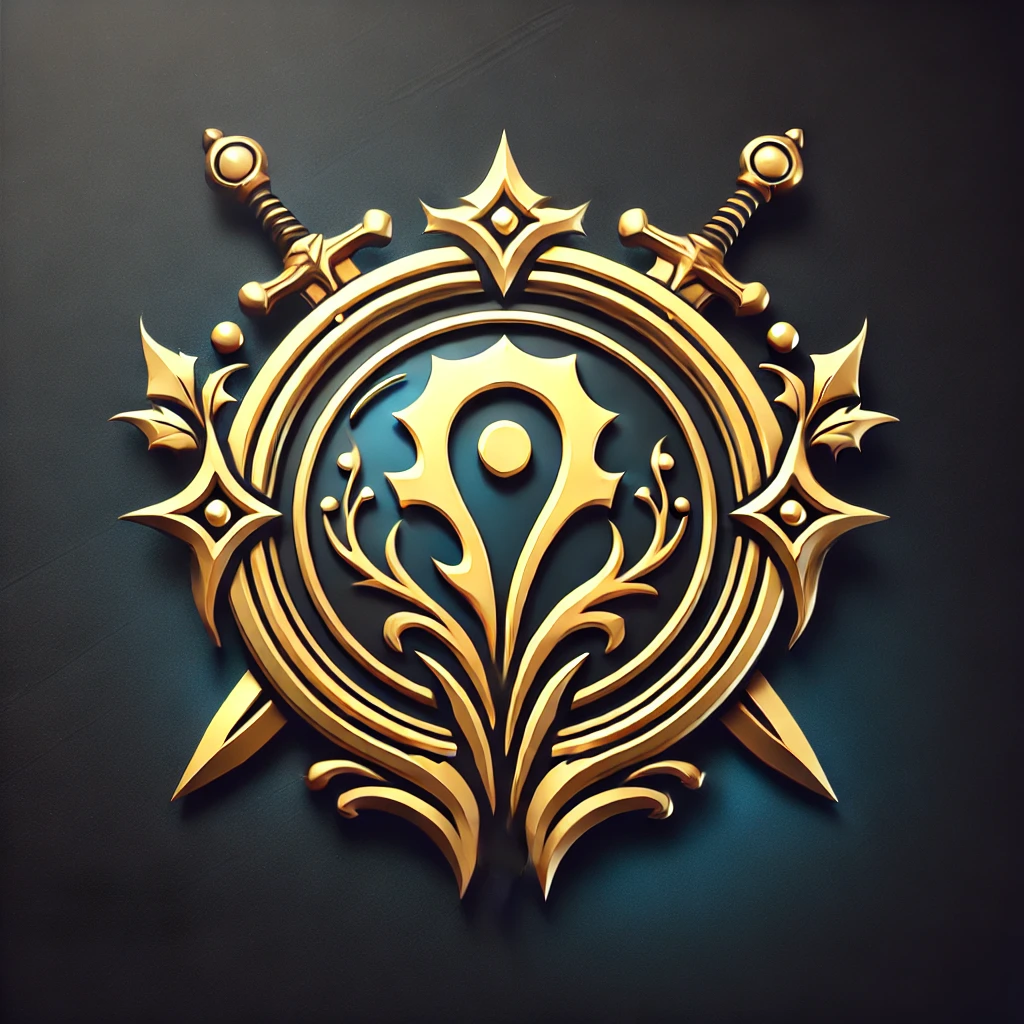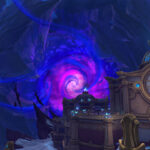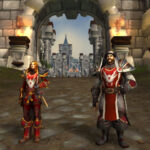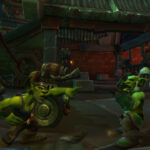Shadow magic in World of Warcraft is more than darkness—it’s knowledge, temptation, and transformation. From the whispers of the Void to the schemes of the Old Gods, it represents the hunger to understand forces beyond mortal comprehension. While Light comforts and heals, Shadow questions and corrupts. Yet it’s not inherently evil—it’s the mirror of truth that reveals the universe’s fragility. Every expansion has deepened its mystery, weaving it through priests, warlocks, and entities that defy sanity.
This article delves into the origins, philosophies, and influence of Shadow magic, tracing its journey from creation myths to modern conflicts that still shape Azeroth’s fate.
The Origin of the Void
Before Light and darkness took form, the Void existed as infinite potential—chaos waiting for purpose. When Light emerged, the clash between illumination and emptiness created the physical universe. From that tension, the Void gained will, birthing the Void Lords. These beings, unknowable and vast, sought to twist creation into their image, leading them to seed the cosmos with corruption. Thus began the eternal duel between understanding and oblivion.
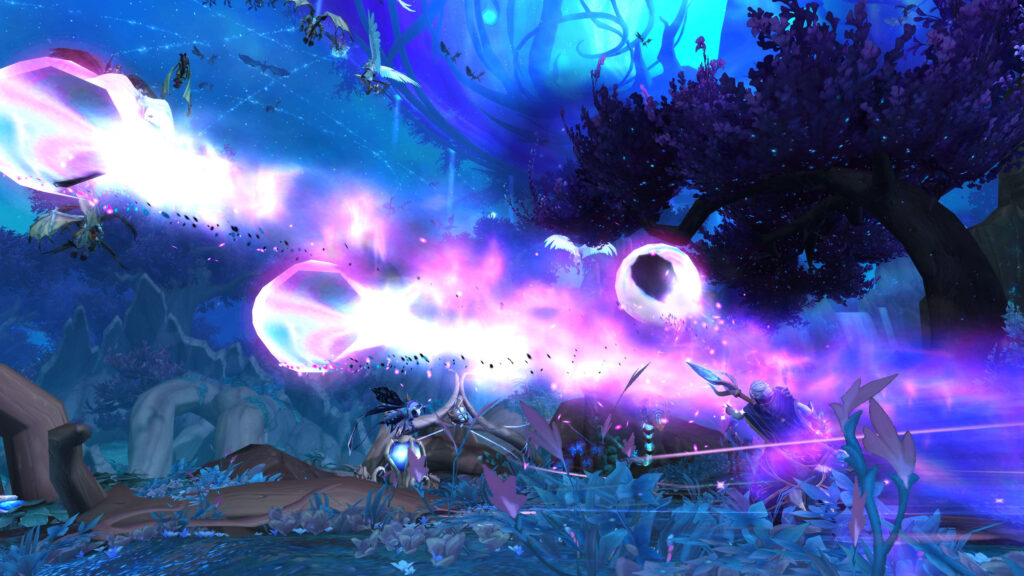
The Void isn’t destruction—it’s curiosity unbound by limits.
The Old Gods – Flesh of the Void
To manifest in the material plane, the Void Lords created the Old Gods, grotesque titans of corruption. They sank their tendrils into Azeroth, seeking to claim the world’s sleeping World-Soul. These entities—C’Thun, Yogg-Saron, Y’Shaarj, and N’Zoth—shaped early history through madness and deceit. Though imprisoned by the Titans, their whispers endure, infecting mortals with both power and paranoia. The Old Gods turned curiosity into weaponry, promising enlightenment but delivering chaos.

They are the dreams of the Void, half-remembered and always hungry.
Shadow Priests and the Philosophy of Balance
Unlike cultists who serve blindly, Shadow Priests embody philosophical tension. They channel the Void’s power while maintaining mortal discipline. Their faith is paradox: embracing madness to understand clarity. Through abilities like Voidform and Mind Flay, they walk the edge between control and collapse. Their power reveals that the Void isn’t evil—it’s insight stripped of restraint. By studying darkness, they expose the Light’s limitations.
True mastery of Shadow lies not in surrender—but in understanding.
- Discipline vs. Abandon: The eternal struggle of channeling chaos without losing oneself.
- Knowledge Through Fear: Shadow teaches that terror and truth are intertwined.
- The Duality of Power: The stronger the Light, the deeper the shadow it casts.
- Voidform: A state of heightened clarity born from near-madness.
- Balance: To wield the Void is to know that control is temporary—but meaning is eternal.
The Influence of the Old Gods Across Azeroth
From the Black Empire to modern storylines, the Old Gods’ influence is everywhere. In Northrend, Yogg-Saron twisted Titan creations within Ulduar. In Pandaria, the remnants of Y’Shaarj birthed the Sha—manifestations of negative emotion. N’Zoth’s return in Battle for Azeroth brought full-scale corruption, proving that their extinction is illusion. The Old Gods remind us that the Void’s will is patient—it reshapes history slowly, through fear and dreams.

They are the echoes of creation’s first mistake—and its unending consequence.
Warlocks, the Void, and Forbidden Experimentation
Warlocks wield Shadow through force rather than faith. Their approach is pragmatic, not philosophical—they harness demons and fel energy to bend the Void to their will. Yet in doing so, they walk the same path as the cults they condemn. The line between control and corruption grows thin. Many Warlocks have discovered too late that to study Shadow is to invite its gaze—and once it notices you, it never looks away.
Power claimed from darkness always demands a toll.
Symbolism in Shadow Magic
Shadow’s imagery reflects its philosophy: spirals, eyes, and whispers. Spirals symbolize infinity—the unending search for meaning. Eyes represent awareness, but also surveillance, implying that knowledge comes at the cost of privacy. Whispers echo temptation, the promise that one more truth will bring understanding. Through this symbolism, Shadow magic transcends mechanics—it becomes art, psychology, and theology intertwined.
The Void speaks softly, but its words reshape destinies.
Modern Narratives and the Balance of Light and Void
In The War Within and beyond, the tension between Light and Shadow grows sharper. Characters like Alleria Windrunner embody the fragile harmony between insight and insanity. As the cosmos fractures under new powers, the Void’s whispers suggest not chaos—but correction. Perhaps the true enemy isn’t the Void at all, but imbalance itself. The story of Shadow is the story of perspective—of learning that darkness is not absence, but depth.
To walk in shadow is to understand light completely.
Conclusion
Shadow magic has always represented the forbidden frontier of knowledge. It tempts, corrupts, enlightens, and destroys—all depending on the hand that wields it. From the Void Lords’ eternal hunger to mortal attempts at comprehension, the theme remains timeless: truth demands risk. Those who study the Shadow stand between sanity and revelation, balancing on the knife’s edge where wisdom meets madness.
Because in Azeroth, enlightenment isn’t found in light—it’s discovered in the shadows it casts.
